
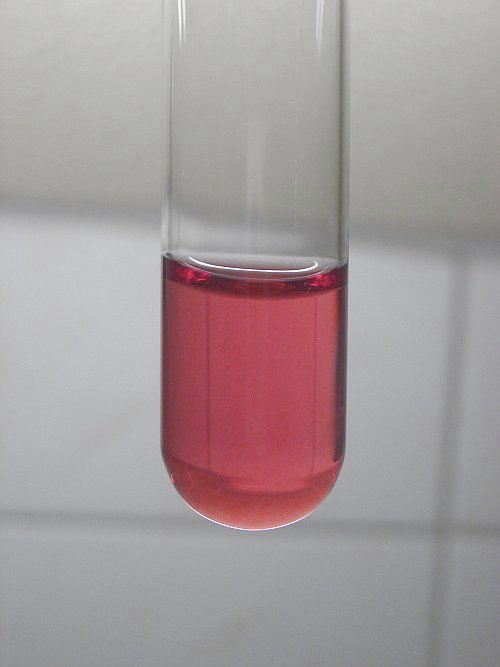

Aqueous solutions and precipitates of cobalt
Cobalt exists in oxidation state +2 and oxidation state +3 in aqueous solutions. As plain aqua ion the +2 oxidation state is most stable, but in most of its complexes, +3 is the most stable. Cobalt has the remarkable property, that plain Co3+(aq) is such a strong oxidizer, that it is even capable of oxidizing water, producing oxygen and a cobalt (II) species. When, however, the cobalt ion is coordinated to e.g. ammonia, cyanide, but also as precipitate to hydroxide, then the +3 oxidation state is strongly favored. The plain aqua ion Co2+(aq) is absolutely stable in water, the coordinated ion, e.g. the hexammine complex Co(NH3)62+(aq) is very easily oxidized by oxygen from the air, forming the complex Co(NH3)63+(aq).
![]()
Oxidation state +2
The aqueous cobalt (II) ion has a bright red/rose color and is quite stable. It is not oxidized by oxygen from the air and is not strongly hydrolysed.
When a precipitate is made with excess hydroxide, then a bright blue precipitate is formed, as is shown in the right picture. The blue precipitate of Co(OH)2 is shown, together with some unreacted cobalt (II) solution.

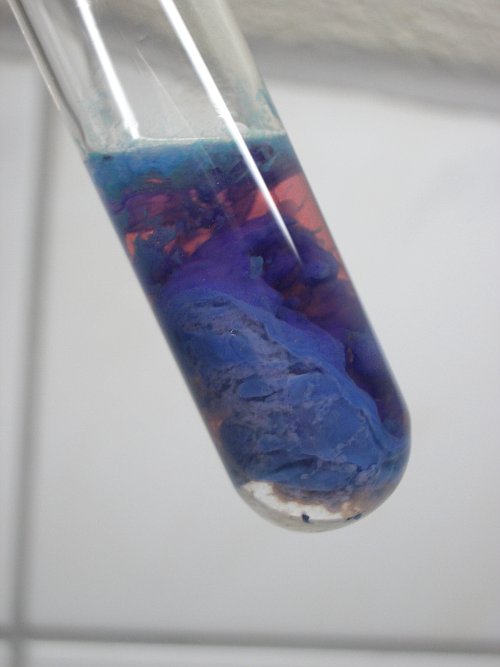
When the precipitate is shaken, then the liquid becomes turbid and bright blue, due to the dispersion of the blue precipitate through the liquid. A very remarkable property of cobalt (II) hydroxide is that its color quickly changes from blue to dirty-pink. Depending on the concentration of the excess hydroxide, this may take seconds for a large excess of hydroxide to a few minutes for just a slight excess of hydroxide, but finally, all precipitate turns pink. The pink material also can be written as hydrous Co(OH)2, but it has another structure than the blue Co(OH)2.
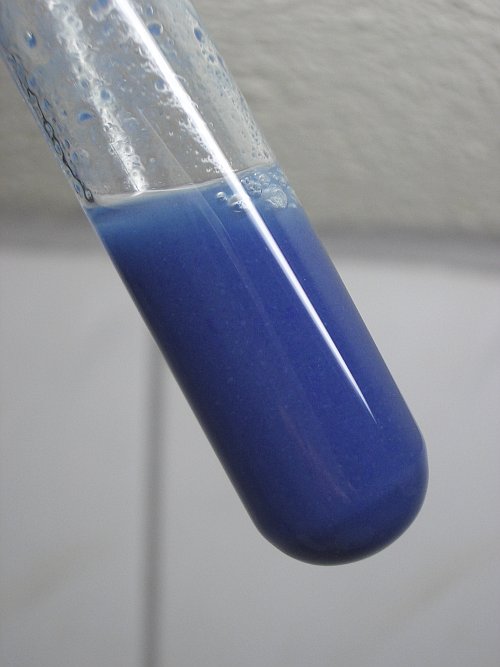
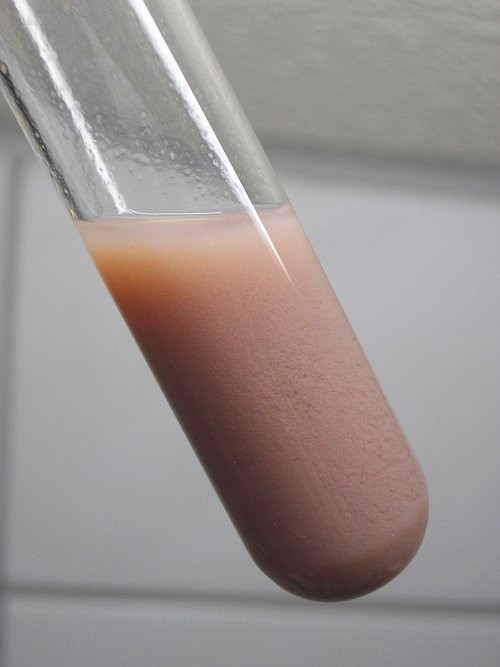
Temperature-dependent color
Cobalt ion also has the remarkable property that in the presence of chloride at moderate concentration its color depends on temperature. Below, two pictures are shown of the same test tube. The left shows the test tube and its contents at room temperature, the right picture shows the same test tube at a temperature just below 100 °C. The solution, shown here is a solution of a small amount of cobalt sulfate in 10% HCl. The change between colors is completely reversible as often as one wants. So, every time when the liquid is heated it becomes deep blue with a purple tinge and when the liquid cools down again, it becomes pink. An explanation for this phenomenon is that at high temperatures chloride ion as ligand is favored and at low concentration, water as ligand is favored. The ion CoCl42- is deep blue.
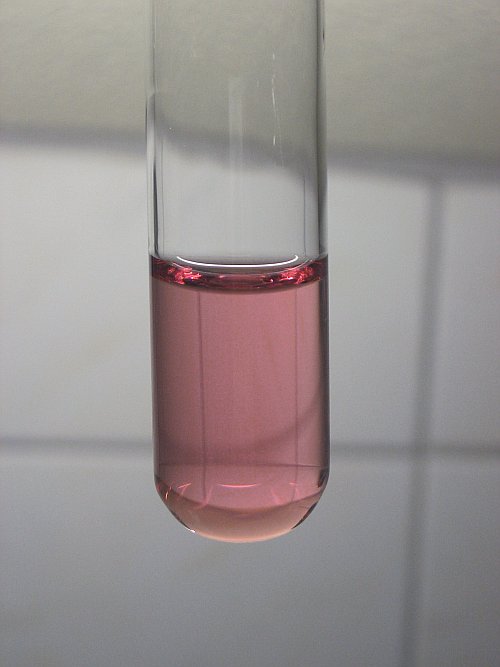
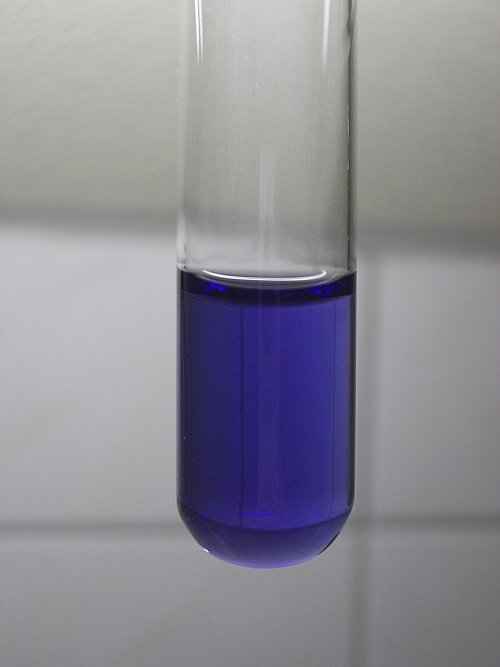
Concentration-dependent color
In the presence of chloride, cobalt (II) also has a concentration-dependent color. At very high chloride concentration, such as present in concentrated HCl, a solution of a cobalt salt is intense blue. On dilution, the color of the solution changes to pale pink. This is shown by the pictures below. The left picture is a solution of cobalt (II) sulfate in concentrated hydrochloric acid (appr. 30% HCl by weight). The middle picture shows the same test tube, with some water poured on the blue liquid carefully. The right picture shows the same test tube, with its contents shaken. This phenomenon can be explained by the fact that high chloride concentration favors the formation of the complex ion CoCl42-.
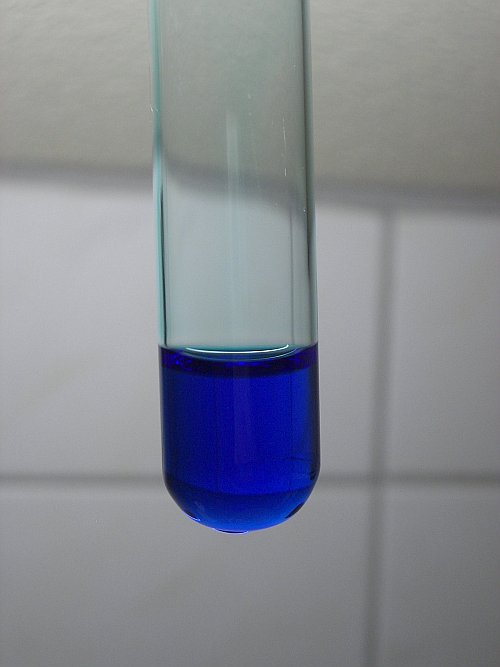
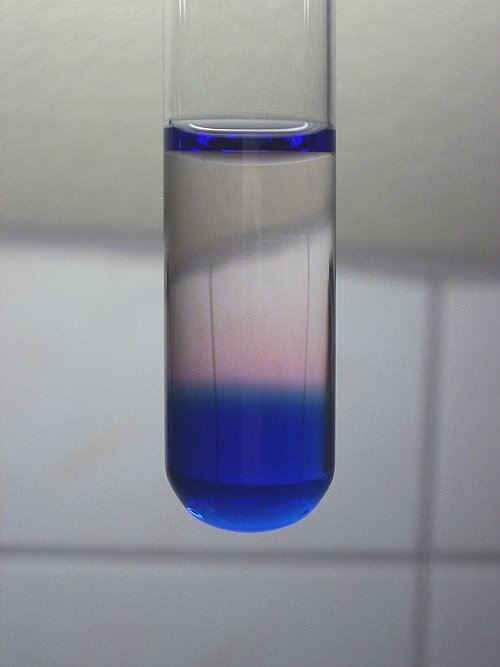
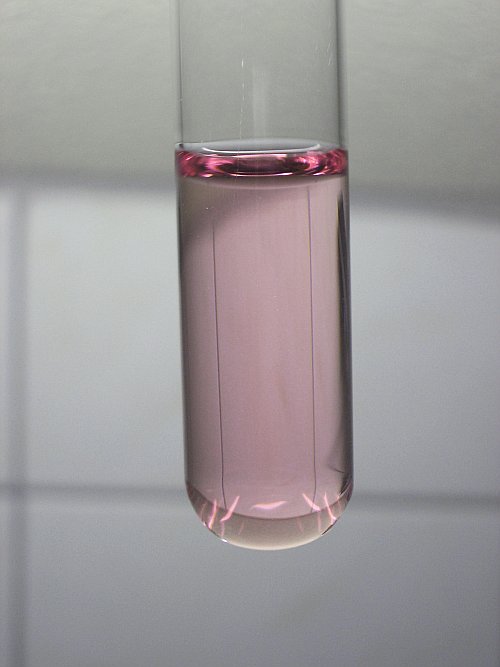
![]()
Oxidation state +3
Plain aqueous cobalt (III) is very unstable and although some books state that this can be prepared, I did not succeed in making this. When a cobalt (II) salt, e.g. cobalt (II) sulfate, is oxidized in solution with a strong oxidizer, then a dark brown precipitate is formed and the liquid becomes brown/pink. Probably, the cobalt (III) ions are very prone to hydrolysis and a hydrous oxide is formed. The brown/pink color may be due to the presence of some cobalt (III) in solution, but this remains unsure. The simple conclusion, which can be drawn is that aqueous cobalt (III) ions are very unstable and hardly can be prepared. The following picture shows the result of heating a solution of cobalt sulfate with sodium persulfate and letting settle the brown precipitate. The brown precipitate most likely is hydrous Co2O3.
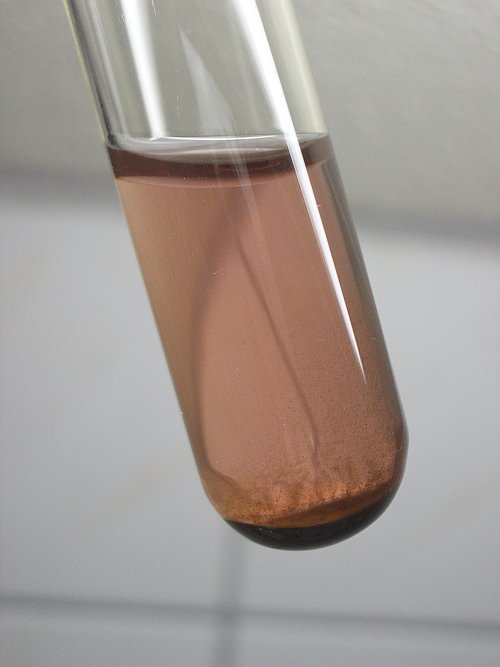
The stability of cobalt (III) changes dramatically, when the ion is coordinated to other ligands than water. This effect is really remarkable. Where aqueous cobalt (II) is very stable and aqueous cobalt (III) is very hard to prepare, with many ligands the situation is reversed completely. E.g. with ammonia, oxalate, carbonate, nitrite and many other ions as ligands, it almost is impossible for the home chemist to prepare the cobalt (II) complex. It is oxidized by oxygen from the air so easily, that the preparation of cobalt (II) complexes only can be done with rigorous exclusion from the air. An example of this is shown in the following sequence of pictures. Here, some dilute ammonia is added to a solution of cobalt (II) sulfate. A blue precipitate is formed of cobalt (II) hydroxide, but in the presence of the ammonia, this quickly is oxidized by oxygen from the air to a brown complex:
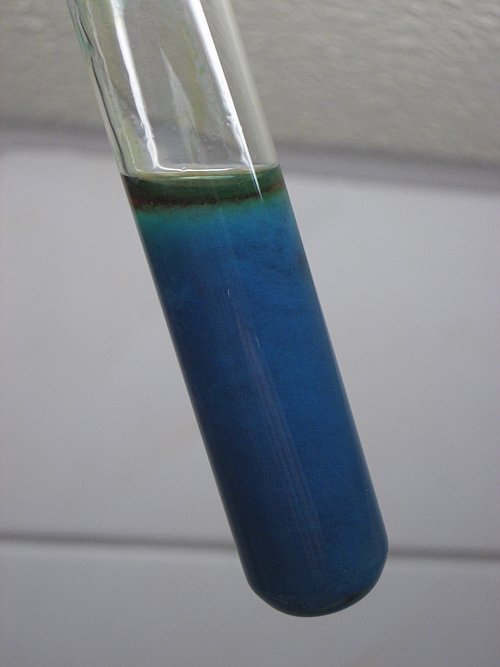
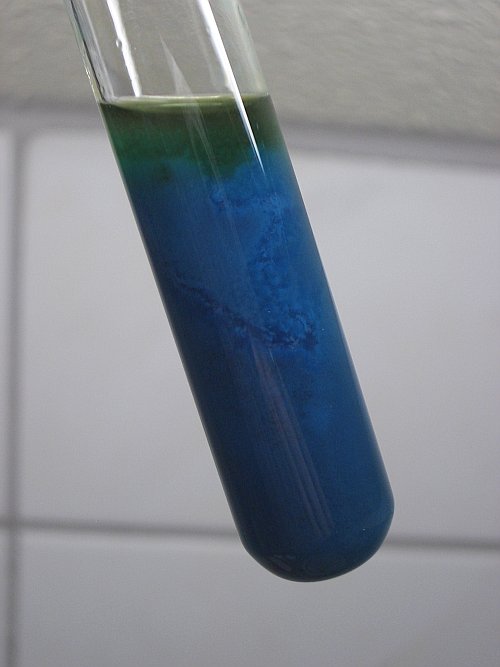
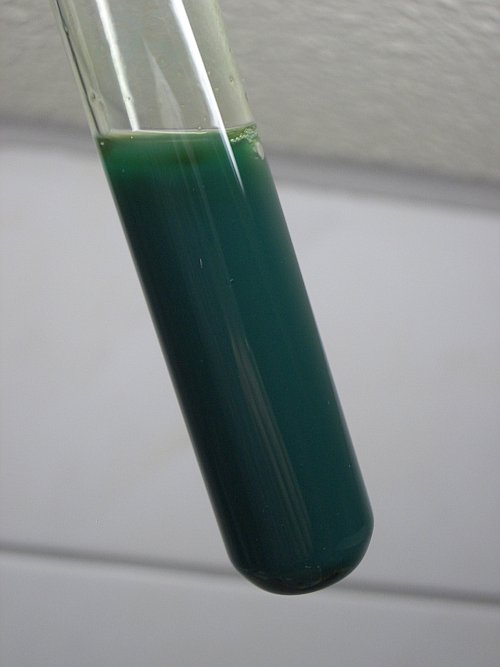
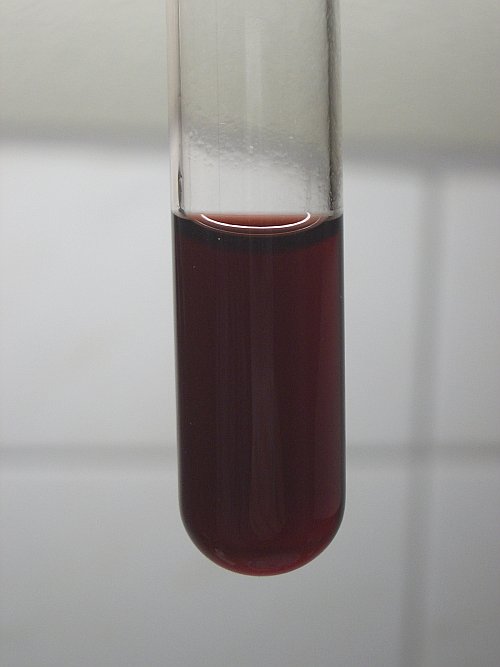
At the left, the precipitate is shown, immediately after its creation. There is a brown layer, which contains an oxidized cobalt species, with cobalt in the +3 oxidation state. The next picture shows the same test tube a minute later. When the test tube is shaken, then its color changes to green and when it is left in contact for a longer time with occasional shaking, then all of the precipitate dissolves and a deep red complex is formed. This is a cobalt (III) complex of ammonia and probably also quite some carbonate, which is taken from the air by the alkaline ammonia solution.
back to solutions/precipitates main page
back to miscellaneous main page